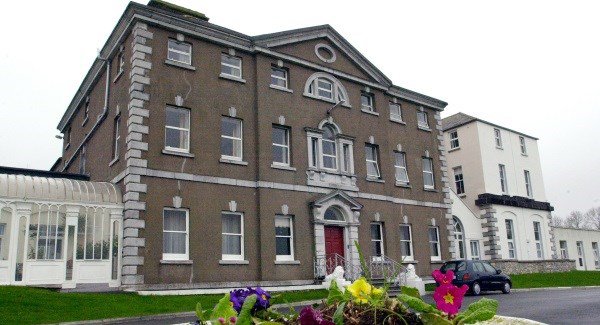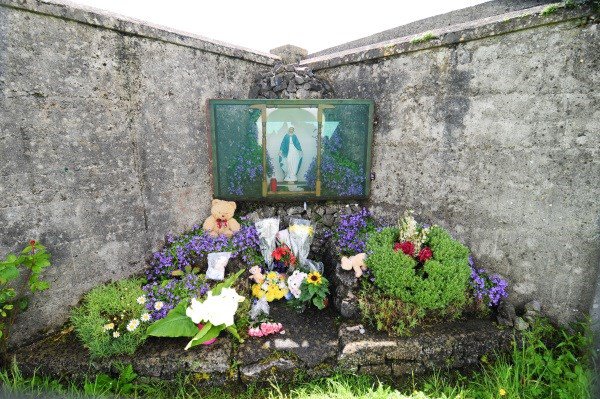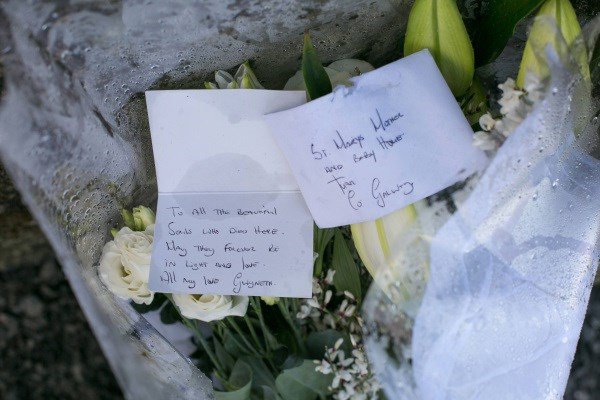Tuam and Bessborough: Houses of Horror
By Conall O Fatharta
“This may prove to be a scandal that dwarfs other, more recent issues with the Church and State...” There’s that word, “scandal”, again. As a nation, we don’t tire of hearing it. That time it was used by senior management in the HSE, in 2012, in relation to the contents of an archive of the Tuam mother and baby home, two years before the Tuam babies scandal broke. It wasn’t the first time the word was used in relation to mother and baby homes and the horrors they hold. Seventy years earlier, the same word was used by parliamentary secretary to the then minister for local government and public health, Dr Con Ward, in relation to an 82% infant death rate at the Bessborough Mother and Baby Home. That rate had been reported to state inspectors. Two things are instructive. Not only has the State known for decades about this issue, but it is impossible to look at Tuam, or mother and baby homes, in isolation. Yet, that is exactly how this issue is playing out.
First, there is a scandal. Then there is an outcry. Then, there is an inquiry, but a limited one. Focus on the narrow and ignore the broader picture. It’s a well-worn path. Instead of examining the bigger picture of how unmarried women and children were treated in a sprawling network of interlinking institutions, private agencies and individuals, we compartmentalise. We treat the Magdalene Laundries, and then the mother and baby homes, as if they are distinct entities, instead of as part of the same story. And what about the adoption agencies, private nursing homes, maternity hospitals, priests, doctors, and even some prominent Irish names? What about the baby rackets, the trafficking of children, the thousands of illegal adoptions, the falsification of records? Maybe one day we will get to that. While we have spent the last year laying flowers at the feet of monuments honouring the dead male Irish heroes of 1916, female heroes lie in graves that are unmarked, forgotten, and largely ignored. Their children lie in other graves, or live, having been adopted, in both Ireland and abroad, many in very dubious circumstances. This is a history we don’t like to talk about. We have barely written about it. This is a history in which women who didn’t fit the idealised vision of newly independent Ireland were hidden behind high walls, their children removed from them, boarded out, adopted, or trafficked abroad. We still don’t know how many were used for medical trials. Thousands more died, while hundreds of infant bodies were used by Irish universities for anatomical research and buried in the Angels’ Plot in Glasnevin as “anatomical subjects”. The children’s crime? Simply the circumstances of their birth. Their mothers’ crime? That they were unmarried women. The mistake, now, would be to simply focus on Tuam and the deaths that occurred there. This is a scandal that is as much about the living as it is about the dead. Very specific concerns about infant mortality in such institutions were raised as early as 1945. The previous year, state inspectors reported that out of 124 infants admitted to the Bessborough home after birth, 102 died — a death rate of 82%.
It briefly led to the government of the day banning pregnant women being sent to the home and led Dr Con Ward to write to then Bishop of Cork, Daniel Cohalan, to express fears about a “public scandal” over the figures. Our most recent governments fare little better, in terms of institutional knowledge of such shocking infant death rates. In 2012, senior HSE management was expressing concern at what was being found in relation to both Tuam and Bessborough. Two reports on the institutions were prepared by the HSE, while it was preparing material for the McAleese investigation into Magdalene Laundries. These reports not only explicitly reference infant mortality rates, but also express serious concerns about the possible trafficking of children from the institutions. They also mention that these issues needed to be investigated as a matter of urgency. IN THE case of Tuam, a note of a teleconference call on October 12, 2012, reveals that senior management in the HSE felt what had been discovered warranted a state inquiry. The call involved then assistant director of the Children and Family Service at the HSE, Phil Garland, and then head of the medical intelligence unit, Davida De La Harpe, expressing concern that 1,000 children had been trafficked from the Tuam mother and baby home in what could “prove to be a scandal that dwarfs other, more recent issues with the Church and State”.
These concerns had been raised by the principal social worker for adoption in HSE West, who had found “a large archive of photographs, documentation, and correspondence relating to children sent for adoption to the USA” and “documentation in relation to discharges and admissions to psychiatric institutions in the Western area”. The archive contained letters from the Tuam mother and baby home to parents, asking for money for the upkeep of their children, and notes that the duration of stay for children might have been prolonged by the order for financial reasons. It also contained letters to parents asking for money for the upkeep of some children who had already been discharged or who had died. The social worker, “working in her own time and on her own dollar”, had compiled a list of “up to 1,000 names”, but said it was “not clear yet whether all of these relate to the ongoing examination of the Magdalene system, or whether they relate to the adoption of children by parents, possibly in the USA”. Those on the conference call raise the possibility that if there is evidence of trafficking, “it must have been facilitated by doctors, social workers, etc, and a number of these health professionals may still be working in the system”. The note concludes by stating that, due to the gravity of what was being found, an “early warning letter” be written to the national director of the HSE’s quality and patient safety division, Philip Crowley, suggesting “that this goes all the way up to the minister”. “It is more important to send this up to the minister as soon as possible: with a view to an inter-departmental committee and a fully fledged, fully resourced forensic investigation and state inquiry,” concludes the note. A week later, in a separate report sent by Mr Garland to Mr Crowley, and which CC’d then national director of Children and Family Services, Gordon Jeyes, and Ms De la Harpe, Dr Declan McKeown, of the medical intelligence unit, outlines concerns about death rates at both Tuam and Bessborough. Dr McKeown notes that the infant mortality rate for Tuam was “approximately 20%-25%, similar to that recorded in Bessborough”. He also raised questions as to the veracity of such death rates. “Queries over the veracity of the records are suggested by causes of death such as ‘marasmus’ in a 2 ?-month-old infant; or ‘pernicious anaemia’ in a four-month-old. These diagnoses would be extremely unusual in children so young, even with the reduced nutrition of the time,” he said. A separate report into Bessborough not only revealed that the deaths of hundreds of children were recorded in the order’s own register, but that, similar to Tuam, the operation was aimed at making money. The examination of the order’s own records found that the women and children in its care were “considered little more than a commodity for trade amongst religious orders”. Minutes from meetings of the Sacred Heart Adoption Society’s board of management “further lend evidence to the order’s preoccupation with materialism, wealth, and social status”, while the wealth and social status of the adoptive parents was often the prime concern when deciding whether they would receive a child. None of the concerns made it into the McAleese report, as they were outside its terms of remit. However, that report did include other material that was, “strictly speaking, outside its core remit”, but deemed “in the public interest. This material “may challenge some common perceptions” about Magdalene laundries. The Report of the Inter-Departmental Group on Mother and Baby Homes, published by the Department of Children and Youth Affairs in July 2014 also failed to mention any of these concerns. This is despite the fact that two government department’s had seen the 2012 HSE report on Bessborough, which revealed that hundreds of children died at the institution over a 19-year period. All of the HSE concerns were being raised almost two years before the Tuam babies scandal made international headlines. Where adoptions fit into all of this should be of particular interest. Adoption campaigners have spent years repeatedly calling for an audit of all adoption records held by the State. So far, these calls have fallen on deaf ears. It’s hard to understand why. The Adoption Authority informed the government in 2013 that there “may be thousands” of cases where people had their birth history falsified, so they could be illegally adopted. This has never been investigated. The Department of Children and Youth Affairs was told by an AAI delegation in June, 2013 — more than a year before the mother-and-baby home scandal — that there were “at least 120 [confirmed] cases” of illegal registrations. This is not a small number, given the small sample size that would have been examined. However, the AAI went further, stating that this could well be the tip of the iceberg and that there “may be thousands” more. It named a well-known former private nursing home — St Rita’s, in Dublin — where women went to give birth to their children, before having to place them for adoption, as a “huge source of illegal registrations”. It specifically named one religious-run former adoption agency — St Patrick’s Guild, in Dublin — as being “aware of several hundred illegal registrations”, stating that the agency “are not seeking the people involved”, but were, rather, “waiting for people to contact them”. The agency’s 13,500 adoption files — one of the largest archives in the country — are now in the hands of Tusla. In a statement to this newspaper, AAI chief executive, Patricia Carey, said that the ‘may be thousands’ comment made at the meeting was “a throwaway remark” and was “not based on verifiable facts”. However, the fact that the department had called for a meeting on the subject, and that an AAI delegation was willing to speculate at all on such a large number, indicates that the issue was firmly on the radar of the adoption regulator. Any woman or adopted person who was through one of the above institutions will not be examined by the current commission, unless her case can be linked to one of the institutions under its remit. Despite this, and countless media reports of adoptions being contracted on the back of documentation which is as best extremely dubious, the Department of Children and Youth Affairs has stood steadfastly to the line that an audit of adoption records, to ascertain the scale of illegal and forced adoptions, “would yield little useful information”, as there would be “little, if any, supporting information in relation to these arrangements” on the files. It is impossible to make such a claim without at least examining the records and, secondly, it’s blatantly clear that these records do contain evidence of illegal adoptions. Adoption support groups have repeatedly said that government refuses to order such an audit, because it fears what will be found. Given what the HSE found in 2012, in relation to Tuam and Bessborough, this may well be the case. More than one government minister has said, on record, that every adoption carried out by the State since 1952 was done in line with the legislation of the day. If that level of certainty exists at official levels, then why not open the files, let everyone see them and, for once, have this country do the right thing?
|
.
Any original material on these pages is copyright © BishopAccountability.org 2004. Reproduce freely with attribution.



